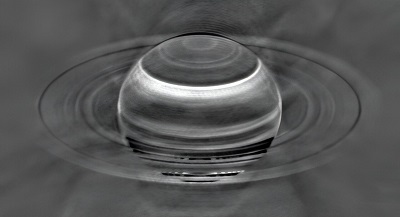New York, (Samajweekly) Saturn has long-lasting megastorms with impacts deep in the atmosphere that persist for centuries, according to a new study.
Previously, only Jupiter was known to have megastorms. The largest storm in the solar system, a 10,000-mile-wide anticyclone called the Great Red Spot, has also decorated Jupiter’s surface for hundreds of years.
“Understanding the mechanisms of the largest storms in the solar system puts the theory of hurricanes into a broader cosmic context, challenging our current knowledge and pushing the boundaries of terrestrial meteorology,” said lead author Cheng Li, formerly at Universities of California-Berkeley and now an assistant professor at the University of Michigan-Ann Arbor.
For the new study, astronomers looked at radio emissions from Saturn, which come from below the surface, and found long-term disruptions in the distribution of ammonia gas.
They found something surprising in the radio emissions from the planet: anomalies in the concentration of ammonia gas in the atmosphere, which they connected to the past occurrences of megastorms in the planet’s northern hemisphere.
According to the team, the concentration of ammonia is lower at mid-altitudes, just below the uppermost ammonia-ice cloud layer, but has become enriched at lower altitudes, 100 to 200 kilometres deeper in the atmosphere. They believe that the ammonia is being transported from the upper to the lower atmosphere via the processes of precipitation and re-evaporation. The effect can last for hundreds of years.
The study, published in the journal Science Advances, further revealed that although both Saturn and Jupiter are made of hydrogen gas, the two gas giants are remarkably dissimilar.
While Jupiter does have tropospheric anomalies, they have been tied to its zones (whitish bands) and belts (darkish bands) and are not caused by storms like they are on Saturn.
The considerable difference between these neighbouring gas giants is challenging what scientists know about the formation of megastorms on gas giants and other planets and may inform how they’re found and studied on exoplanets in the future.










